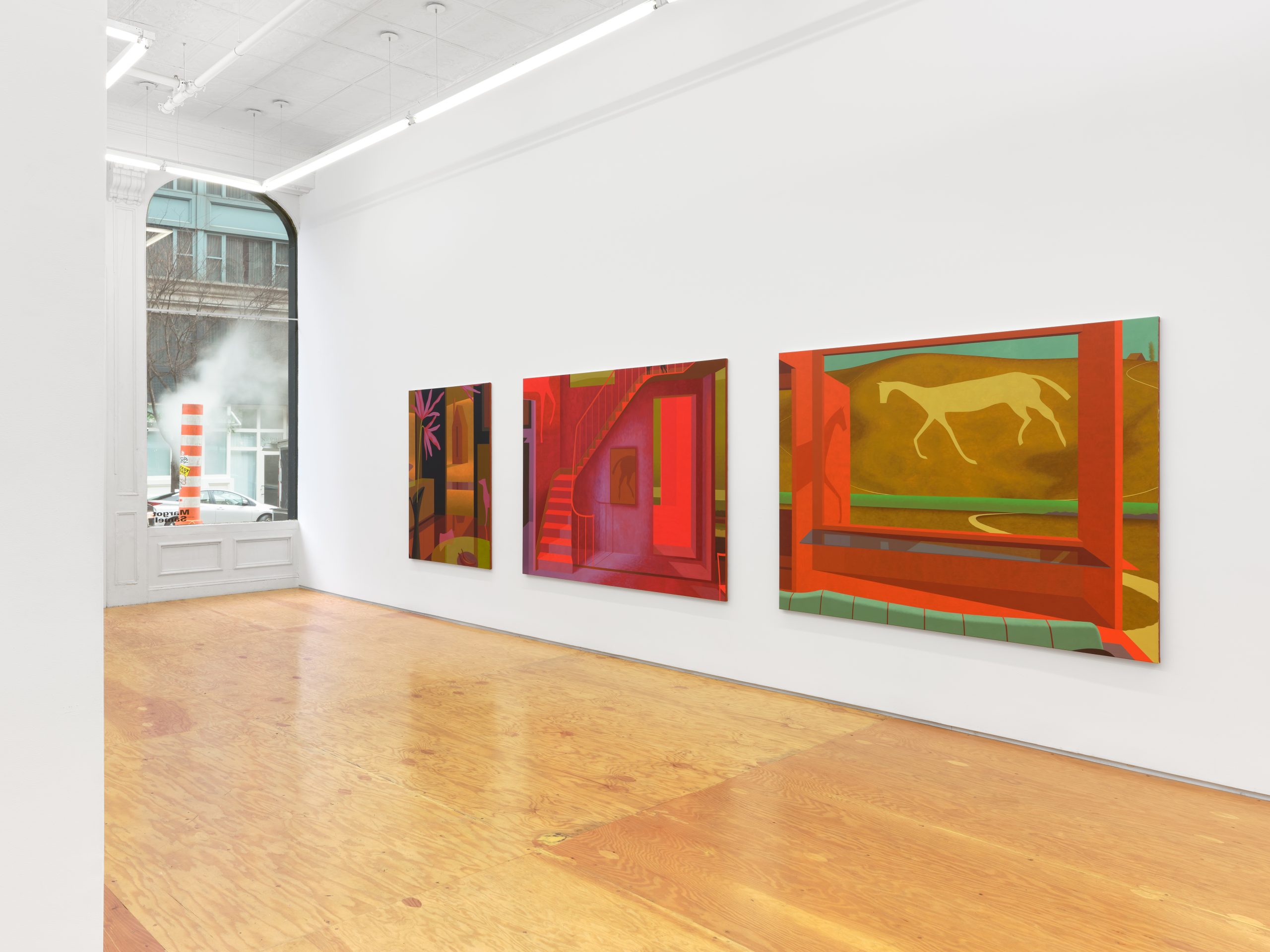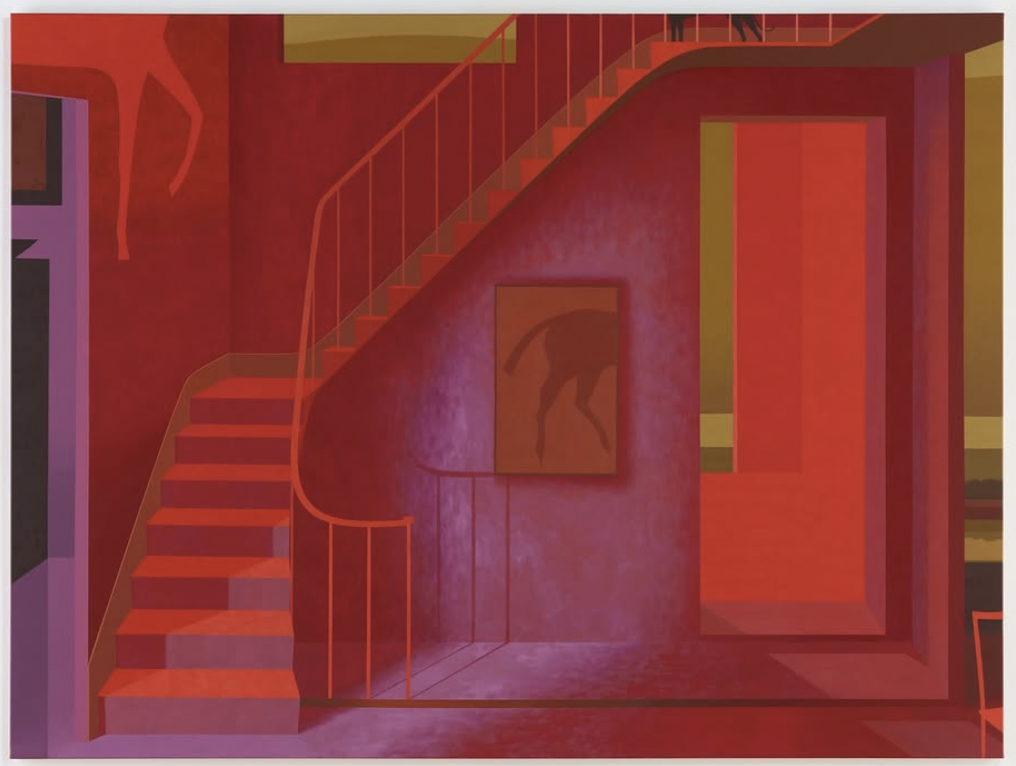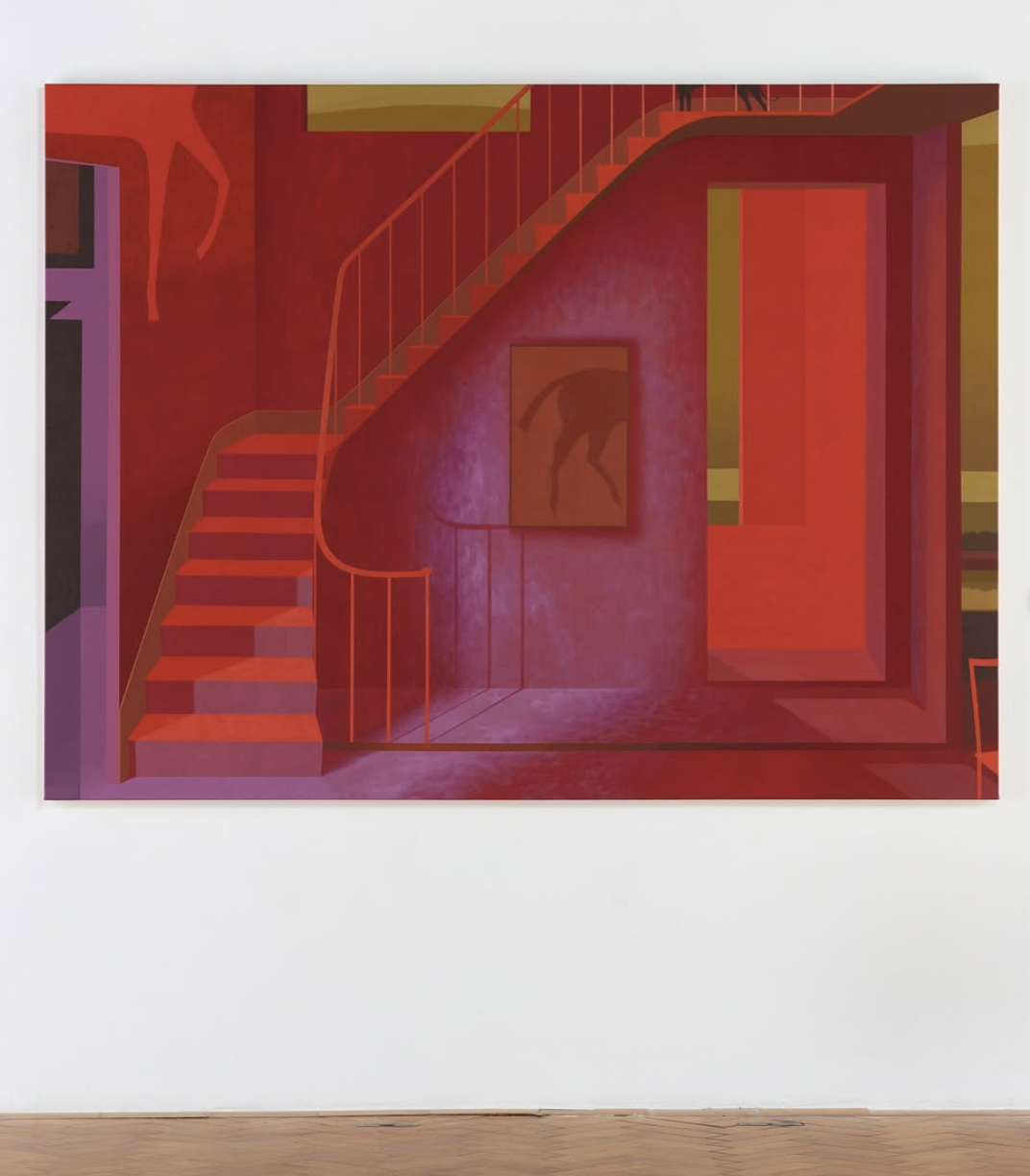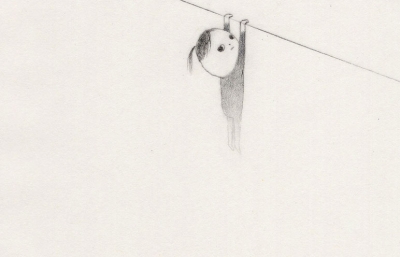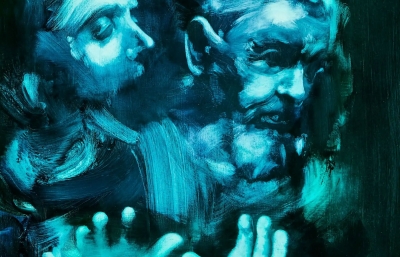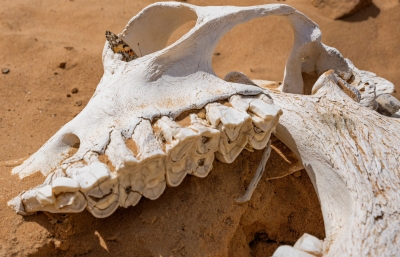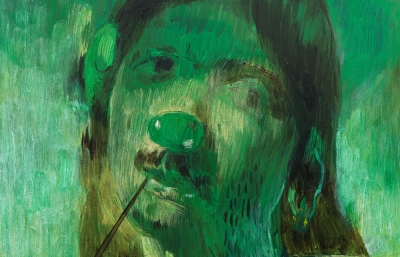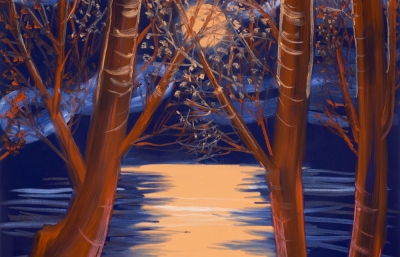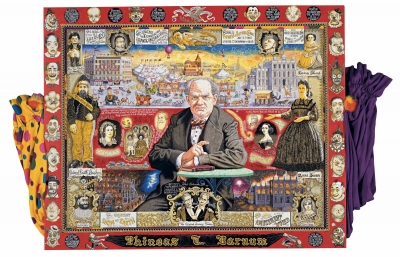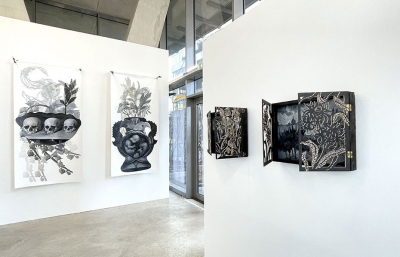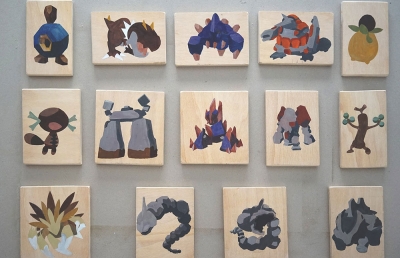Margot Samel is pleased to announce The Chalk Carver’s House, a solo exhibition of new works by Alfie Caine (b.1996, London, UK). This is the artist’s first solo exhibition with the gallery and in the US.
On Hindover Hill, west of the village of Litlington in Sussex, a white chalk horse lays 20 meters tall against the land. Set within grassland and wild meadows, it is suspected that its initial carving occurred in the 1800s, by moonlight, executed by a local farmer and his sons. Drawn to these mysterious origins, the title of Alfie Caine’s exhibition,The Chalk Carver’s House, references the imagined interior rooms of the legendary chalk carver’s dwelling. Throughout the exhibition, the artist has constructed fictional domestic spaces near his home of Rye that reflect and play off familiar landmarks and local mythology. Each is connected through portholes and passageways, gazing to and from the land, in and out of uncanny structures that cradle ineffable quiet moments. A former architecture graduate, the interior setting in Caine’s works slips between a subject that holds memory and one that constructs it. Windows and doorways become stanzas that move a viewer between verse and sentiment, designing worlds that extend across canvases.
In Chalk Horse, a kind of narrative is introduced to the viewer. The carving is centered in an open window–in the foreground, a desk set within bright orange walls captures the reflection of the inhabitant’s landscape. It is here where the artist imagines the carver’s drafts first began. The story continues through to Nine Legs, visible by way of a door to the viewer’s left of frame, where a staircase in crimson hues frames a painting of the horse’s hind legs in reverse–a possible sketch for the final creation. The house is a kind of canvas for the imagined carver, a motif that follows through Golden Hills, where the inhabitant’s dog is memorialized against dark kitchen walls that emphasize the setting sun in the landscape outside. All this rests across from the River Cuckmere, a feature tying the three works together through a matching horizon line.
In another couplet of works titled Cliff Garden and Shower Mist respectively, Caine depicts the hidden backyard of a building known locally as The House with the Secret Garden. In the first, the viewer gazes towards the back of a cottage resting on the edge of a stream from a patio set in yawning mid-afternoon shadows. In the second, the viewer is in a top-story bath that catches view of the formerly depicted cabin’s chimney at dusk. The scene, and its changing time and temperatures, gives a viewer the whole scope of nature’s workings out of frame. We can perceive the unseen sun’s movement across the sky, feel the potential of steam leaving the small shower room, its vapor exchanging particles with that of the river’s invisible and slow evaporation. As with all of the connected works in the exhibition, their building’s walls enliven the spaces they bifurcate—bridging the inside and outside into a complete imagined universe.
The suggestion of life running through the entire new body of work, from flowers in a vase on a kitchen table and barely visible paws of a dog upstairs in the Chalk Horse triplet, to a fresh tablecloth on the patio set and the open doorway to the shower room in the Secret Garden diptych, and to a water bottle on a train car in The Journey to a wind farm whirring in the distance of Twilight Bath, are endearments to a world that exists as it is perceived. The artist’s clues are deliberately ambiguous, leaving the possibilities of their owner’s whereabouts and habits up to our imaginations. These settings, paired together throughout The Chalk Carver’s House, are unpeopled atmospheric intimations on the animation and mysteries of all things around us. —Emily Small

